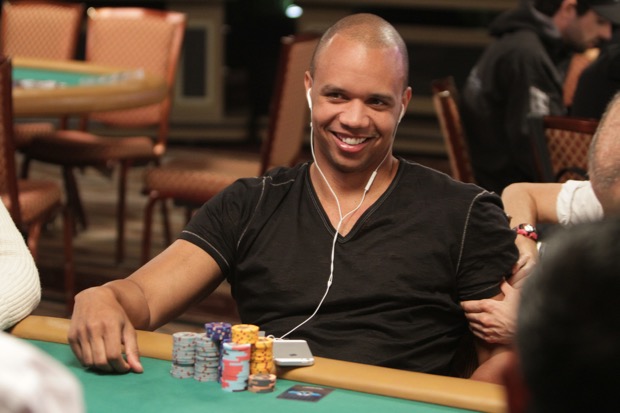Poker 2-7 Lowball Rules
Posted : admin On 4/7/2022The “Deuce” designation means that the middle poker hand is played according to the rankings used in 2-7 lowball, while the other two hands are played as regular “high” poker hands. 2-7 Single Draw Lowball. 2-7 (Deuce to Seven) Single Draw is a form of draw poker, sometimes referred to as ‘Kansas City Lowball’. Lowball games reward the best low hand, making it the opposite of games likes Hold’em and Stud, in which the highest hand wins.
Deuce to Seven draw poker isn't the most popular game in the world, but it has shown a slight resurgence lately due to an increase in online popularity. There are two forms of the game: Deuce to Seven Single Draw and Deuce to Seven Triple Draw. Both have basically the same structure, and the differences involve how many rounds of 'drawing' each game has. This article will teach how to play 2-7 Draw Poker, including the single draw as well as the triple draw variation. Read on for the full rules of the game:
Objective of Deuce to Seven Draw
In Deuce to Seven Draw, players make bets into a pot in the hopes of winning the collective pot. There are two ways a player can win a hand: either by forcing all of the other players to fold, or by having the best hand at the end of the game. To make the most money playing Deuce to Seven Draw, you want to get money in the pot when you have the best hand, and keep money out of the pot when you have a poor hand.
Deuce to Seven Draw Structure
Deuce to Seven triple draw is typically played at a table with six players, and the single draw variation usually is played at a table with seven players. Since each player receives a minimum of five cards, you can't really have more than 6 or 7 players at the table because the deck would run out of cards. Both games are usually played in either Fixed Limit or No Limit stakes. Tables are referred to based on their stakes. For example, a $1/$2 No Limit table would have a $1 small blind and a $2 big blind.
2-7 Single Draw Rules
We'll start by explaining the rules of 2-7 Single Draw and then explain 2-7 Triple Draw later on. Since both games are basically the same up until a certain point, it's easy to learn them both at once.

Shuffle Up and Deal

The game starts with two forced bets called 'blinds'. Blinds are used to make sure that every hand has money in the pot. There are two blinds: the small blind and the big blind. The small blind is paid by the player directly to the left of the dealer button, and the big blind is paid by the player two seats to the left of the dealer button. Every hand the dealer position rotates one seat to the left, and thus, the blinds also rotate one seat to the left. View the below diagram to get a visual understanding of who pays the blinds.
One difference between No Limit and Fixed Limit 2-7 Draw is the size of the blinds. If you're at a $1/$2 No Limit table, the small blind is $1 and the big blind is $2. However, if you're at a $1/$2 Fixed Limit table, the small blind is $0.50 and the big blind is $1. It's not a big deal, but it's just one strange difference between the two betting variations. Here's that image I promised you that shows the blinds in relation to the dealer:
Once the blinds are posted the next step is to deal out everyone's hole cards. Each player receives five face down cards that are dealt out one by one starting with the small blind and moving clockwise around the table. Once everyone has their hole cards, the first betting round begins.
First Betting Round

After everyone has their cards, the first betting round takes place. The first player to act is the player directly to the left of the big blind. This player can either call the big blind, fold, or raise the big blind. If it's a no limit game, the player has to raise to at least 2x the big blind if they choose to raise. After the first player acts, action continues clockwise around the table, and all the other players can call, fold, or raise. The first betting round ends when every player has either folded or called the highest bet.
The big blind sometimes ends up in a unique situation if no one raises during the first betting round. Since he/she already has their big blind in, they have the option of checking and receiving the first draw without putting any more money in the pot.
The Draw
After the first betting round is completed players receive their first draw. The draw starts with the first player to the left of the dealer. This player has the option to draw 1, 2, 3, 4, or 5 cards, or to draw zero cards and 'stand pat'. After that player draws, the draw continues clockwise around the table until every player has received their new cards. Once all cards have been dealt out, there is another betting round.
Second Betting Round
The second betting round starts with the first player to the left of the dealer. He/she can either check or bet. Action then continues around the table clockwise, and each player can either check (if no one has bet), bet (if no one has bet), call (if there has been a bet), raise (if there has been a bet), or fold. The betting round ends once every player has either called the highest bet or folded.
NOTE - In 2-7 Single Draw you would now have a showdown. If you'd like to skip right to the showdown, click this link. If you'd like to learn the remaining rules of 2-7 Triple Draw, keep reading.
2-7 Triple Draw Rules
Since 2-7 Triple Draw starts out exactly the same as 2-7 Single Draw, we decided to condense this article so it wouldn't be a mile long. If you've already read all of the above steps, keep reading to find out the remaining rules of 2-7 Triple Draw.
Second Draw

Ok, so now you've just completed the second betting round and are ready for the second draw. This draw is exactly the same as the first draw. It starts with the first player to the left of the dealer, and each player has the option to draw 1, 2, 3, 4, or 5 cards, or to once again 'stand pat'. Once every player has received their cards you now have the third betting round.
Third Betting Round
The third betting round is exactly the same as the second betting round. It starts with the first player to the left of the dealer, and moves clockwise around the table. Each player has the option to check, bet, raise, call, or fold. Of course, if there haven't been any bets you can't raise, and if another player has already bet then you lose the option to check. Once all players have either called the highest bet or folded, you move on to the third and final draw.
Third Draw
This draw is once again the same as the previous draws. Starting with the player to the left of the dealer, each player can draw 1, 2, 3, 4, or 5 cards, or stand pat and draw none. Once each player has received their cards you move on to the fourth and final betting round.
Last Betting Round
The final betting round starts with the first player to the left of the dealer, and continues around the table clockwise. Each player can check, bet, call, raise, or fold. Once everyone has either called the highest bet or folded, the betting round is over and you have a showdown.
The Showdown
Showdowns in 2-7 Draw are much different than showdowns in typical poker games like Texas Hold'em. Instead of using normal hand values, players use a 'low' hand system. Basically, you attempt to make the worst possible five card poker hand. Aces are high, and straights and flushes count against you. Here is a chart showing the best 2-7 hands:
| Hand Rank: | Hand: | Example Hand: |
| #1 | 7-Low | 7-5-4-3-2 Off Suit |
| #2 | 8-Low | 8-7-5-4-3 Off Suit |
| #3 | 9-Low | 9-5-4-3-2 Off Suit |
| #4 | Ten-Low | T-9-7-4-2 Off Suit |
| #5 | Jack-Low | J-8-7-4-2 Off Suit |
| #6 | Queen-Low | Q-8-6-5-3 Off Suit |
| #7 | King-Low | K-J-8-3-2 Off Suit |
| #8 | Ace-Low | A-K-8-7-4 Off Suit |
| #9 | Pair | K-K-5-4-3 |
| #10 | Two Pair | 8-8-5-5-3 |
| #11 | Three of a Kind | J-J-J-4-3 |
| #12 | Straight | J-T-9-8-7 Off Suit |
| #13 | Flush | 2-5-6-9-T Suited |
| #14 | Full House | 8-8-8-3-3 |
| #15 | Four of a Kind | J-J-J-J-2 |
| #16 | Straight Flush | 2-3-4-5-6 Suited |
In the event of a tie, you'd look at whoever has the lower version of that hand rank. For example, if two players both have Ten-Lows, you'd look at the next highest card to see who's was lower. Imagine that one player has T9654 and the other has T9743. The first cards are both Tens, so you'd move to the next one. These are both nines so you'd move to the next one. The first hand has a six, and the second has a seven. Six is lower than seven, so the first hand would be the winner.
In the event of two players having a pair or a straight, the lower hand would win. Example - a pair of twos beats a pair of fives, and an eight-high straight beats a ten-high straight.
History of 2-7 Draw
Not much is known about the history of this poker game, other than it probably developed as a variation of 5 card draw, because that is the game it resembles most. It is basically a carbon copy of five card draw, other than the 2-7 hand values that are used for the game, and a rarely used no check/raise rule.
Where to Play Deuce to Seven Draw Poker?
Poker 2-7 Lowball Rules Board Game
Once you learn the rules of 2-7 Draw, your next step is finding an online poker site that offers the game. Not many sites offer 2-7 Single or Triple Draw, but we have found the best 2-7 Draw Poker Sites. Here's our #1 site: